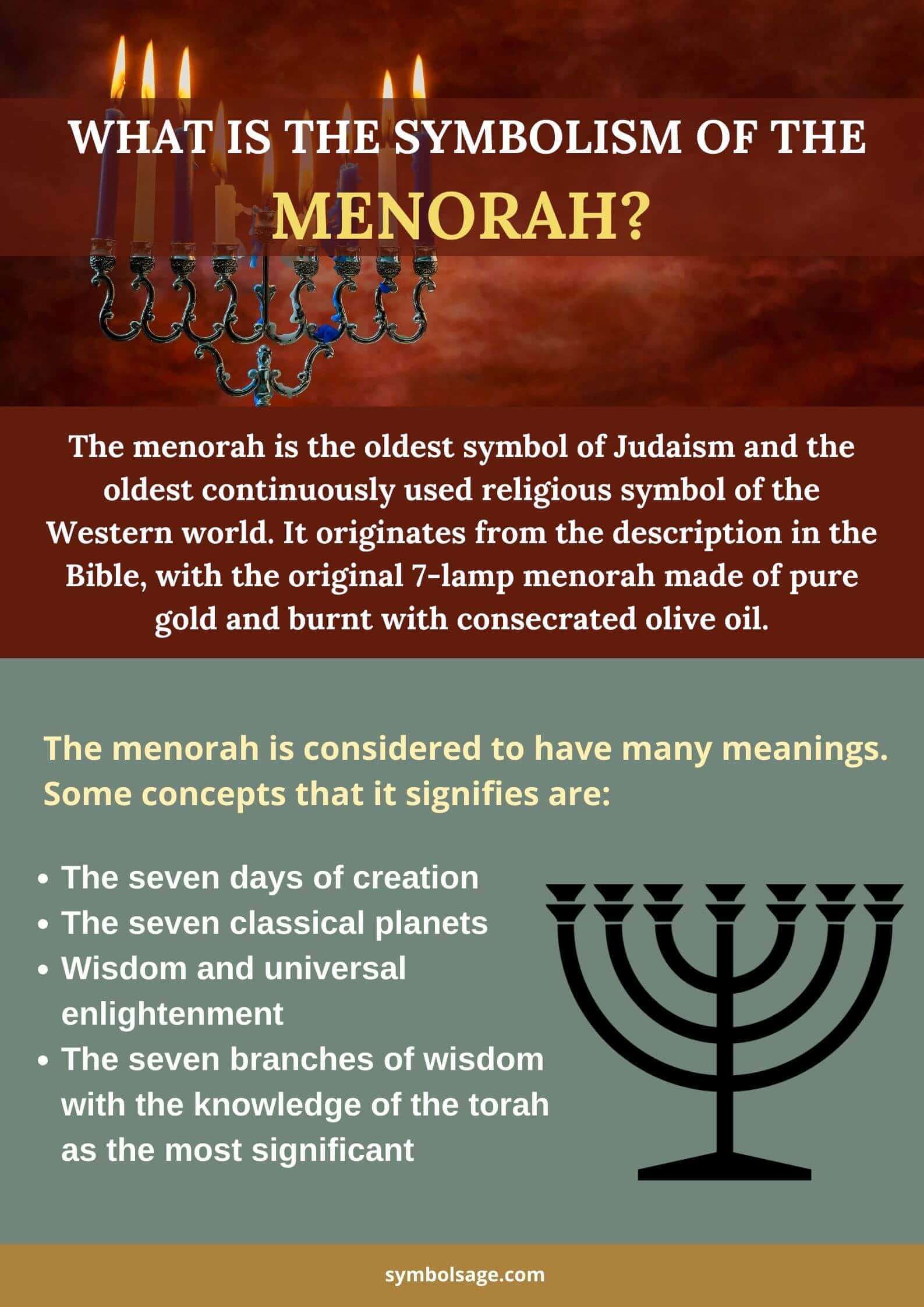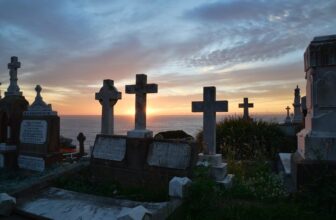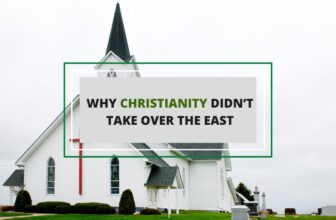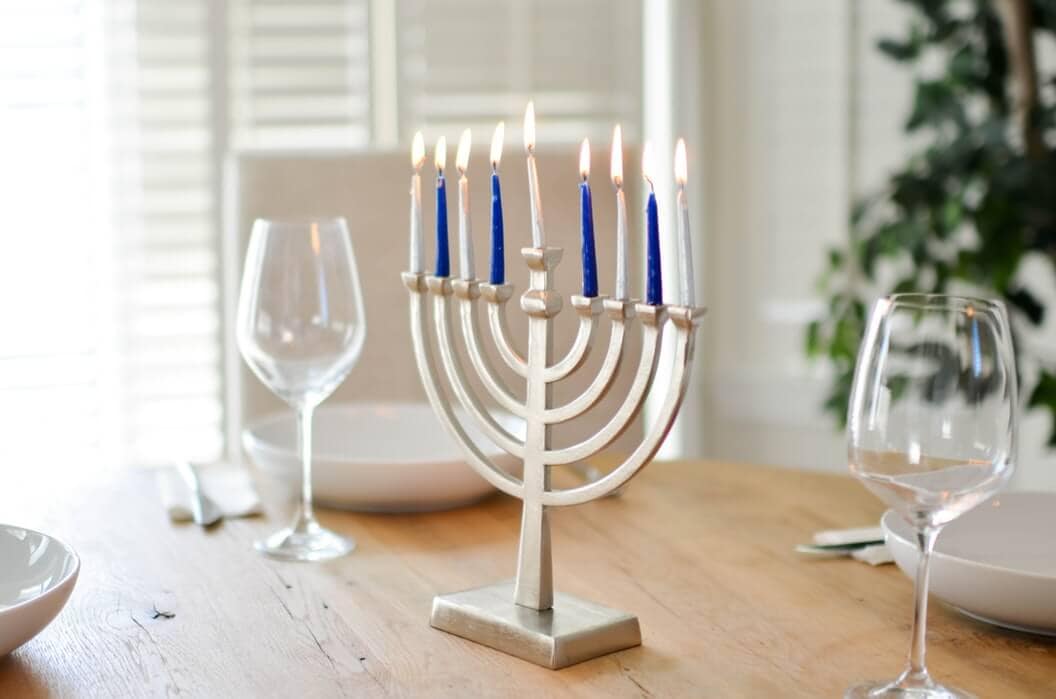
The menorah is one of the most easily recognizable and well-known symbols of Judaism. It has the distinction of being not just the oldest Jewish symbol, but also the oldest continuously used religious symbol of the West. As such, it’s integral to Jewish tradition.
The menorah is depicted on the coat of arms of the State of Israel, is a central feature of the holiday of Hanukah, and is seen in synagogues around the world. With it’s seven arms, this symbol holds deep meaning to the Jewish. Let’s take a look at what it means.
What is the Menorah?
The term menorah derives from the Hebrew word for lamp and originates from the description of the seven-lamp lampstand as outlined in the Bible. But although it started out as a description of one specific lamp, today there are two variations to the menorah.
1. Temple Menorah
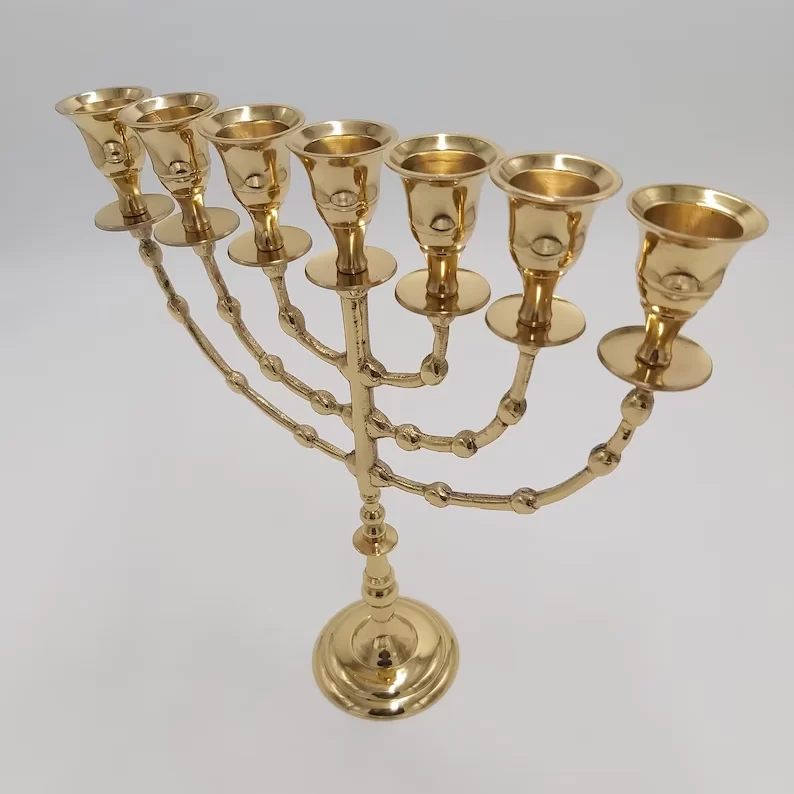
The Temple Menorah refers to the original seven-lamp, six-branch menorah, which was made for the Tabernacle and later used in the Temple of Jerusalem. This menorah was made of pure gold and lit with consecrated fresh olive oil, as per the mandates of God. The Temple Menorah was typically lit inside the temple, during the daytime.
According to the Talmud (the most important text of Jewish religious law), it is forbidden to light a seven-lamp menorah outside of the Temple. As such, menorahs lit in homes are Chanukah menorahs.
2. Chanukah Menorah: Hanukkiah
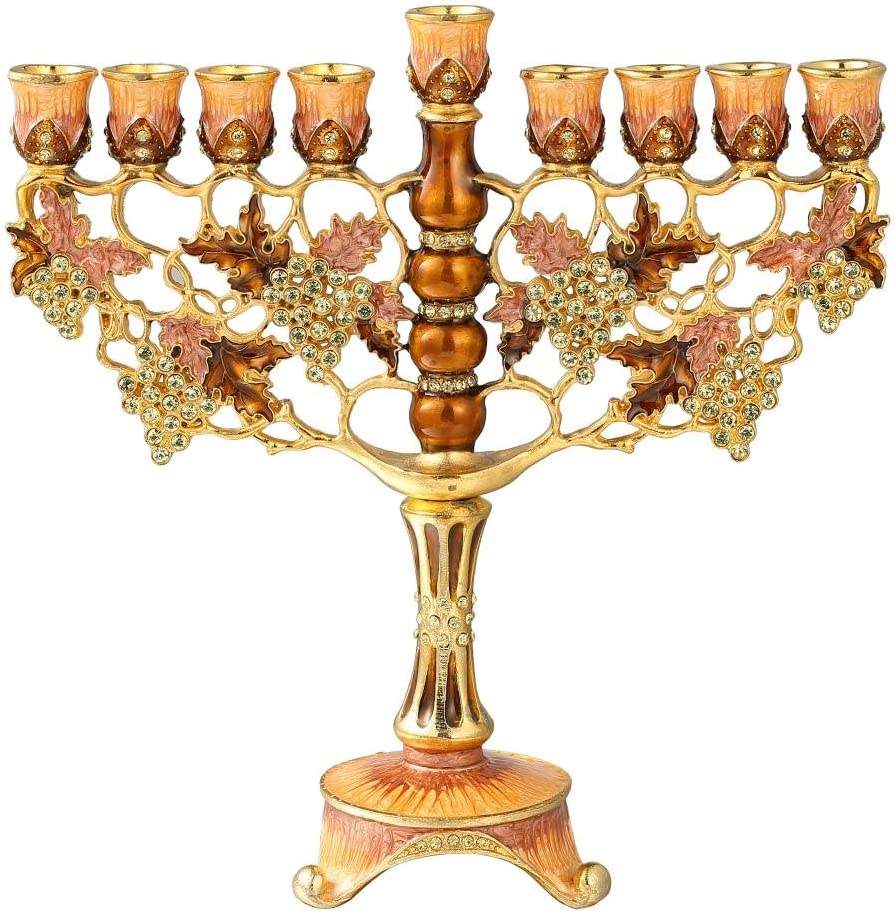
The Chanukah Menorah, also called a Hannukiah, is lit during the Jewish holiday of Chanukah (also Hannukah). These contain eight branches and nine lamps, with the lamps or candles being lit each night of the festival. For example, on the first night of Chanukah, only the first lamp would be lit.
On the second night, two lamps would be lit, and so on till the eighth day, when all eight lamps would be lit. The light used to kindle the menorah lamps is known as the shamash, or the servant light.
These modern menorahs are made of metal, or any other fire-safe material, and not of pure gold as outlined in the Bible. They are lit after sundown and allowed to burn late into the night. While some place them at the entrance to the main doorway, facing the street, others keep them indoors, near a window or door.
Menorah Symbolism and Meaning
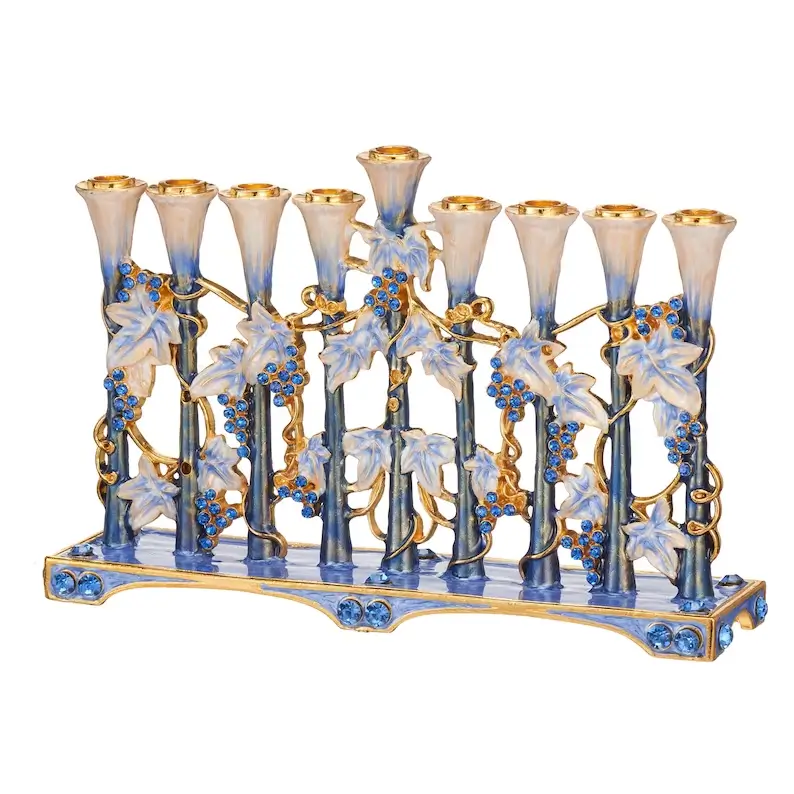
The menorah is considered to have many meanings. In Judaism, the number seven has powerful numerical significance. Here are some of the interpretations of the menorah:
- Days of Creation: Some teachings suggest that the seven branches correspond to the seven days of creation. In this context, the Menorah symbolizes the completeness and order of the creation process.
- Seven Planets: The Menorah can symbolize the seven classical planets, and by extension, the entire universe.
- Torah and Wisdom: The central branch, or “shamash,” is sometimes thought of as representing the Torah, with the six branches representing knowledge that emanates from it.
- Israel’s Mission: The prophet Zechariah had a vision of a Menorah, and it was explained to him that the Menorah symbolizes God’s eyes roaming the earth, which has been understood by some as symbolizing Israel’s role as a “light unto the nations” (Isaiah 42:6).
- Jewish Resilience: The Menorah also plays a role in the story of Hanukkah. In this context, the eight-branched “Hanukkiah” (a variant of the Menorah) symbolizes the miracle of the oil, where a day’s worth of oil lasted for eight days. This story underscores themes of Jewish perseverance and the divine presence aiding in times of need.
Uses of the Menorah
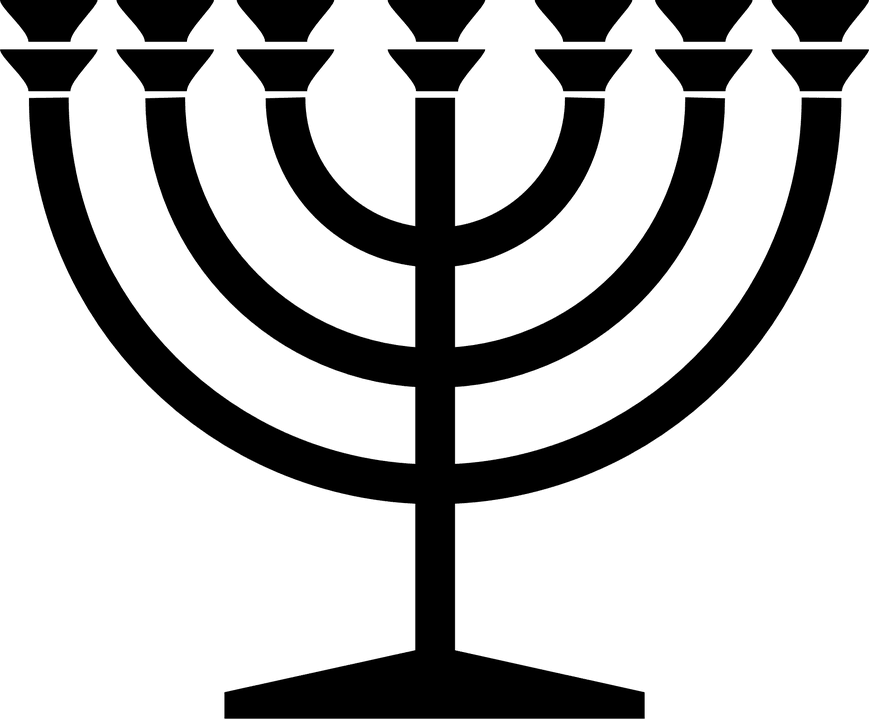
The symbol of the menorah is sometimes used in decorative items and jewelry. While it’s not exactly a typical choice for jewelry, it does make for an intriguing design when used in pendants. The menorah is also ideal when crafted into small charms, as a way to express one’s religious ideals and Jewish identity.
The menorah as a lampstand itself comes in a wide range of styles, from rustic, bohemian designs to elaborate and unique versions. like this stunning kinetic walnut menorah. These, range in price from a few dozen dollars to hundreds of dollars.
Lighting of the Hanukkiah: How It’s Done
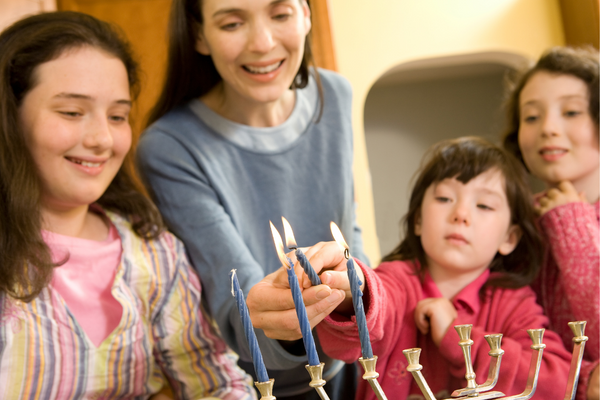
Lighting the menorah is an important ritual, central to the Jewish festival of Hanukkah, also called the Festival of Lights. Here’s how it’s typical done:
- Lighting the Hanukkiah: The Hanukkiah, a special nine-branched candelabrum, is used during Hanukkah. It typically consists of eight branches, representing the eight nights of the holiday, and a central branch called the shamash, which is used to light the other candles. The Hanukkiah is usually placed in a prominent location, such as a window or doorway, to publicize the miracle of Hanukkah.
- Lighting Order: The Hanukkiah is lit each night of Hanukkah, starting with one candle on the first night and progressively adding one candle each subsequent night until all eight candles are lit on the final night. The shamash is always lit first and is used to kindle the other candles. The candles are lit from left to right but are then placed in the Hanukkiah from right to left.
- Blessings: Before lighting the candles, specific blessings are recited. The first blessing, known as the “L’hadlik ner shel Hanukkah” (“Blessing for kindling the Hanukkah lights”), is recited while lighting the shamash. The second blessing, called the “Shehecheyanu,” is recited on the first night of Hanukkah to give thanks for reaching the holiday.
- Public Display: The lit Hanukkiah is traditionally placed in a visible spot, such as a window or doorway, to publicize the miracle of Hanukkah. This serves as a reminder of the victory of the Maccabees and the miracle of the oil in the Temple.
- Custom and Celebration: After the candles are lit, it is customary to sing or recite Hanukkah songs or prayers, such as “Ma’oz Tzur” (Rock of Ages) and “Hanerot Halalu.” Families often gather together to celebrate and enjoy festive meals, play games, exchange gifts, and partake in other joyful activities.
Menorah FAQ
In the Bible, the menorah holds symbolic significance and is associated with the Israelite Tabernacle and later the Temple in Jerusalem. It represents light, divine revelation, holiness, Israel, continuity, and the eternal flame.
The Menorah is an important item in Judaism and holds great significance within the Jewish faith.
These two are often used interchangeably, but are two different objects. The menorah typically refers to the seven-branched candelabrum used in the Tabernacle and Temple, while the Hanukkiah specifically refers to the nine-branched candelabrum used during the festival of Hanukkah.
In Brief
The menorah remains one of the most significant and the oldest symbols of Jewish faith. Today, the original menorah is symbolized by the Ner Tamid, or eternal flame, which can be found in every synagogue. Whether in the heart of the ancient Temple or in contemporary places of worship, the Menorah’s symbolism continues to inspire, guiding the Jewish community in their faith and traditions.
